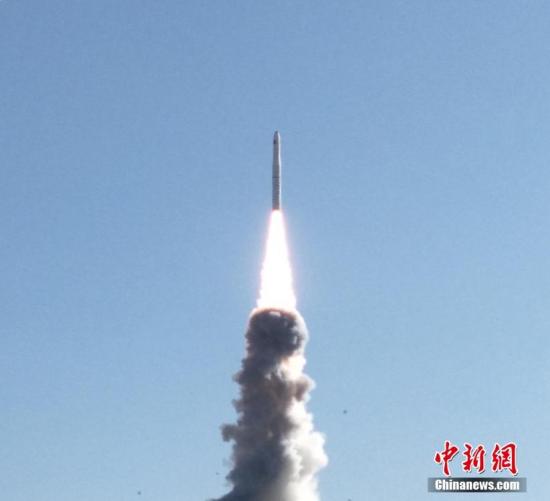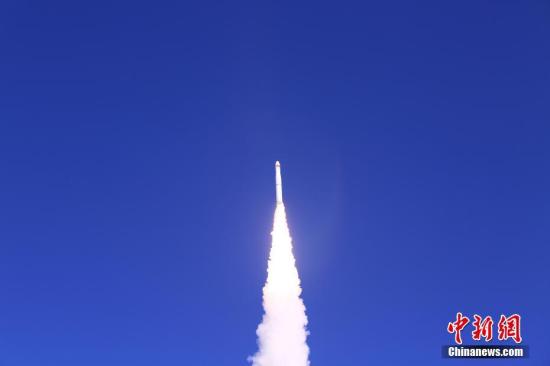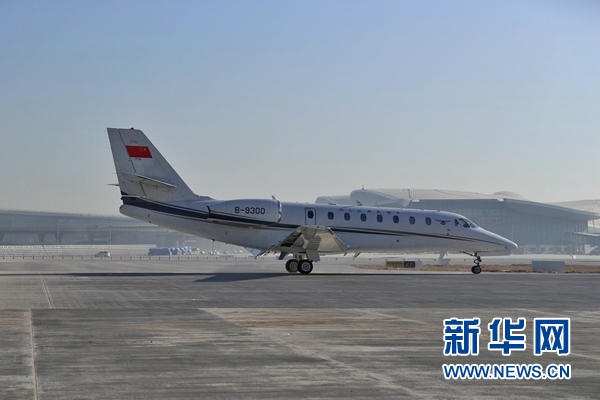Chow Ang Moh officially acknowledged and reported Chinese PLA ahead of USA in many ace weapons
https://agenparl.eu/dias-china-military-power-report-details-leaders-strategy/
 Agenparl English Difesa Social Network Top News
DIA’s China Military Power Report Details Leaders’ Strategy
Agenparl English Difesa Social Network Top News
DIA’s China Military Power Report Details Leaders’ Strategy
by
Redazione Redazione16 Gennaio 2019
08
Share
0
(AGENPARL) – Washington, mar 15 gennaio 2019
WASHINGTON — China’s military rise is well-planned, and Chinese leaders are following a strategy they believe will lead to greater power and influence both regionally and globally, according to an unclassified report released today by the Defense Intelligence Agency.
The 125-page report, “China Military Power — Modernizing a Force to Fight and Win,” details some of the efforts made by the world’s most populous nation to build a military force that will allow it to back up plans for “great rejuvenation.”
“As we look at China, we see a country whose leaders describe it as moving closer to center stage in the world, while they strive to achieve what they call the ‘great rejuvenation of the Chinese nation,’” said Dan Taylor, a senior defense intelligence analyst with the DIA. “This ambition permeates China’s national security strategy and guides the development of the People’s Liberation Army.”
Taylor pointed out that the PLA is not actually a national institution in China, but rather the military arm of the Chinese Communist Party. About 3 million serve on active duty in the PLA, making it the largest military force in the world. Additionally, it’s thought the PLA receives about $200 billion a year in funding — about 1.4 percent of China’s gross domestic product — though lack of transparency means exact numbers can’t be determined.
Comprehensive National Power
Communist party leaders in China, Taylor said, are looking to build “comprehensive national power” over the first few decades of the 21st century, and a key component of that is enhanced military power.
“China is rapidly building a robust, lethal force, with capabilities spanning ground, air, maritime, space and information domains, designed to enable China to impose its will in the region, and beyond,” Taylor said.
Economic growth in China has enabled it to spend significantly to modernize the PLA, and continued development is expected, Taylor said.
“In the coming years, the PLA is likely to grow even more technologically advanced and proficient, with equipment comparable to that of other modern militaries,” Taylor said. “The PLA will acquire advanced fighter aircraft, modern naval vessels, missile systems, and space and cyberspace assets as it reorganizes and trains to address 21st century threats farther from China’s shores.”
According to the DIA report, Chinese efforts to advance the PLA have been informed, at least in part, by what it has observed of the U.S. military during past military operations — including both abilities and gaps in capability.
“The Gulf War provided the PLA stark lessons regarding the lethal effectiveness of information-enabled weapons and forces, particularly mobility and precision-strike capabilities, that had become the standard for effectively waging war in the modern era,” the report says.
The Chinese also have adapted their forces and doctrine to exploit perceived gaps in U.S. defenses.
Following the Gulf War and the fall of the Soviet Union, Chinese leaders perceived a period of strategic opportunity, the report says.” Convinced they would not see a major military conflict before 2020, China embarked on a period of economic and military development.
The Chinese increased the PLA budget by an average of 10 percent per year from 2000 to 2016, for instance. They additionally reformed the way the PLA bought weapons, and instituted several broad scientific and technical programs to improve the defense industrial base and decrease the PLA’s dependence on foreign weapon acquisitions.
Realistic Training
The PLA saw the capabilities U.S. and Western forces fielded. Those forces used realistic training scenarios, and the Chinese adapted that to their forces as well. Leaders also implemented personnel changes to professionalize the PLA.
“The PLA developed a noncommissioned officer corps and began programs to recruit more technically competent university graduates to operate its modern weapons,” the report says. “PLA political officers assigned to all levels of the military acquired broader personnel management responsibilities in addition to their focus on keeping the PLA ideologically pure and loyal to the CCP.”
Professionalization of the PLA, with an increased push to focus on an ability to “fight and win” — a goal that mirrors U.S. doctrine — has been a hallmark of Chinese President Xi Jinping’s recent military strategy, said one defense official speaking to reporters on background.
Key takeaways from the DIA report include the Chinese emphasis on cyber capabilities, the defense official added. “It’s clear to us it’s a very important area to the Chinese,” the official said. “But it’s hard to know exactly how effective a cyberattack capability is until it’s actually used.”
China’s focus on Taiwan also is a focus of the DIA report.
“Xi Jinping has made it clear that resolving or making progress, at least, on resolving … the Taiwan situation is a very top priority for him,” the defense official said.
(C. Todd Lopez of Defense.gov contributed to this report.)
Documents:
https://tw.news.yahoo.com/美國防情報研析-中國部分尖端武器已取得領先-055429568.html
美國防情報研析 中國部分尖端武器已取得領先

Yahoo奇摩(即時新聞)
19.2k 人追蹤
2019年1月16日 下午1:54
美國國防情報局15日發布一份新情報報告指出,中國致力取得尖端武器、打造自身成為全球軍事強權,日益威脅美軍優勢,尤其高超音速武器與中遠程飛彈,恐都已領先美國。
美國國防情報局發布新的中國軍力報告指出,中國日益威脅美軍優勢,尤其高超音速武器與中遠程飛彈,恐已領先美國。圖為中國2015年九三閱兵時的東風26(DF-26)彈道飛彈。(資料照)
「華盛頓郵報」報導,這是國防情報局(DIA)第一份就中國軍事能力提出的公開報告,反映美國政府內部對因應中國軍力急速崛起、或致力於主宰太平洋美國盟邦的態勢反應不夠快,感到越來越憂心。
國防情報局分析師泰勒(Dan Taylor)在五角大廈告訴媒體:「過去10年間,從執行亞丁灣打擊海盜任務,到在東海及南海擴大軍力展現,中國已表現出利用解放軍(PLA)做為國家力量工具的意願,遂行他們所謂的新世紀歷史任務。」
據DIA這份名為「中國軍力:部隊現代化以利作戰與戰勝」的報告指出,中共領導人大部分焦點仍放在確保國內穩定,但他們也越來越關注於主宰東亞,主要與北京政府要統一台灣的目標有關。
中國藉挑戰他國對東海與南海爭議島嶼主權的主張、建造第一艘國產航艦,展現區域龍頭地位。中國還研發新的長程轟炸機、在爭議地區興建軍事前哨,以利新方式投射軍力。亞洲以外,中國在非洲的吉布地(Djibouti)建立首座海外軍事基地,並以海軍艦船從葉門撤僑。
國防部官員表示,有2項領域中國可能已領先美國,一是高超音速滑翔載具,另一是中遠程及遠程飛彈。
根據DIA這份報告,中國2014年試射反衛星飛彈系統,另外發展能用於攻擊、癱瘓人造衛星的能力,北京也在研究、並可能已在研發反衛星雷射。
美中台三角關係
小英巡視弓三 陸網友這招尋飛彈位置
美國防情報研析中國軍力 重點一次看
https://www.defenseone.com/threats/...lot-things-once-pentagon-intelligence/154194/
China’s Military Is Getting Better at a Lot of Things at Once: Pentagon Intelligence
- By Kevin Baron Executive Editor Read bio
January 15, 2019
Topics
AP Photo/Mark Schifelbein
AA Font size + Print
The DIA’s first public report cites rapid advances, extended reach, and increasing confidence.
China’s military power remains limited and its leaders want no war with the United States, but its desire for regional hegemony, global reach, and advanced technology means the U.S. military has much more to watch out for in the years ahead, according to a new unclassified assessment by the Pentagon’s intelligence agency.
This is the Defense Intelligence Agency’s first
public and unclassified report on the People’s Liberation Army’s arsenal and intentions; the agency released a similar report on Russia’s military last year. It arrives five months after the Pentagon’s own
annual report on Chinese military power — and two weeks after Acting Defense Secretary Patrick Shanahan
reportedly instructed senior leaders to remain focused on one thing: “China, China, China.”
DIA’s findings and conclusions will be unsurprising to China watchers, but the assessment also publicly reveals the agency’s top concerns about Beijing’s military plans, leaders, and weapons — a list of concerns intended to guide the Trump administration and military leaders.
“In the coming years, the PLA is likely to grow even more technologically advanced and proficient with equipment comparable to that of other modern militaries,” said Dan Taylor, senior defense intelligence analyst at DIA, who read a statement to reporters at the Pentagon on Tuesday. “The PLA will require advanced fighter aircraft, modern naval vessels, missile systems, and space and cyberspace assets as it reorganizes and trains to address 21st-century threats farther from China’s shores.”
Related: Why China’s Military Wants to Beat the US to a Next-Gen Cell Network
Related: The Trump Administration Wonders: Should We Seek a ‘Cold War’ With China?
Related: US Air Force Is Redrawing Its Pacific-War Playbook for China
But Taylor and the DIA seem more focused on how the PLA is helping Beijing attain its grand strategy goals. The Communist Party’s long-stated plan is to seize what they see as a moment of strategic opportunity to help achieve “great power status” that is “designed to enable China to impose its will in the region and beyond,” he said.
DIA leaders do not believe that China is there yet. But President Xi Jinping has ordered the PLA to get better at using its rapidly modernizing arsenal, and a senior defense intelligence official who briefed reporters Tuesday said that the Pentagon is closely watching as Chinese leaders extend and gain confidence in their abilities — for example, to strike Taiwan or beyond.
“[Xi] thinks there are elements within the PLA that are still not focused on taking full advantage of all this modern equipment we’ve been talking about here and building their professional capabilities,” said the official. “We have to remember that the PLA two decades ago was still running hotels and businesses and not focused as much on capabilities and development, and he is very focused on that.”
DIA believes that China will look to expand from its new South China Sea islands and its new base in Djibouti.
“We now have to be able to look for a Chinese military that is active everywhere,” said the official. “We will have to interact with them, engage with them, deal with them, monitor them broadly more than we ever had to before, when they were very regionally focused near their own shores.”
China’s most likely conflict may still be with Taiwan, but DIA feels any such fight remains far off. The PLA continues to add missiles that can hit the breakaway island — and U.S. military assets on Guam — but DIA does not believe China’s leaders feel they have the other resources — helicopters, ground forces, etc. — that could win and hold the territory. But DIA worries those leaders may soon grow bolder.
“They are getting to a point where the PLA leadership may actually tell Xi Jinping that they are confident in their capabilities,” said the official. “The biggest concern is that as a lot of these technologies mature, as their reorganization of their military comes into effect, as they become more proficient with these capabilities, our concern is we’ll reach a point where internally, within their decision-making, they will decide that using military force for a regional conflict is something that is more eminent.”
Yet one factor will continue to rein in Beijing’s ambitions: experience. China has not fought a war in four decades; moreover, there is a generational gap between newer Chinese military officers, who are being trained for joint warfare across military service branches, and older officers whose have limited experience extends only to their own service branches and regional assignments inside China.
“I think the greatest vulnerability right now [is]… that this is a military that hasn’t fought a war in 40 years,” said the senior defense intelligence official. “This is a military that is very new at some of these concepts. They’ve been talking about joint operations for a long time, but some of is it just now sort of being implemented. And it will take a while for them to be able to work these services together, to be able to work these joint theaters and to be able to deal with a large, complex operation. When they’ve done things militarily at all, like counter-piracy, it’s been a few things tightly controlled. A few ships tightly controlled from the very top. Being able to manage a very large conflict, I think will be very challenging for them,”
Moreover, DIA believes that China’s leaders see their top threats as coming from internal challenges to the party rule, not outside conflict. “Beijing’s primary threat perceptions include sovereignty and domestic security issues that it believes could undermine the overriding strategic objective to perpetuate communist rule,” the official said.
To put a finer point on it, minority groups and terrorism are not uppermost on the mind of Xi’s government, despite the headlines about the
oppressed Muslim population of Uighurs. Rather, they worry about the overall economy of the billion-plus people they rule.
“The real biggest threat that worries the Chinese leadership is instability among the majority Han population, because that will become the threat potentially to a regime’s instability,” the official said.
But if suppressing dissent is the top priority of China’s leaders, it is not the only one.
“We have to remember that the Chinese leadership is very focused on domestic stability concerns, but also that we are seeing a developing and a modernizing military that is able to do things much further from internal security that they had focused on in the past,” the official said.
- Kevin Baron is the founding executive editor of Defense One. Baron has lived in Washington for 20 years, covering international affairs, the military, the Pentagon, Congress, and politics for Foreign Policy, National Journal, Stars and Stripes, and the Boston Globe, where he ran investigative ... Full bio
https://www.roanoke.com/washingtonp...cle_b123a3fe-414e-5f4b-844e-5f8dd85cc04d.html
China's advances pose increasing threat to American military dominance, report says
- By Missy Ryan and Paul Sonne The Washington Post
- 5 hrs ago
WASHINGTON — China’s drive to acquire cutting-edge weaponry and establish itself as a global military power poses an increasing threat to American defense superiority, a new intelligence report said Tuesday.
The Defense Intelligence Agency’s first public report on Chinese military capability reflects mounting concern within the U.S. government that the United States is not moving quickly enough to respond to Beijing’s rapid military rise or its efforts to dominate American allies in the Pacific.
“During the past decade alone, from counter-piracy operations in the Gulf of Aden, to an expanded military presence in the East and South China Seas, China has demonstrated a willingness to use the (People’s Liberation Army) as an instrument of national power in the execution of what they call their historic mission in the new century,” Dan Taylor, a senior DIA analyst, told reporters at the Pentagon.
The assessment by the Pentagon’s intelligence agency comes as the U.S. military begins reshaping itself to counter powers such as China and Russia after nearly two decades of focusing on counterinsurgency and anti-terrorism operations. Though then-Defense Secretary Jim Mattis released a new national defense strategy in January 2018 outlining the goals, the Pentagon is still working on implementing them, with officials promising that proof of the transformation will be visible in the department’s 2020 budget request, which is due out next month.
Acting defense secretary Patrick Shanahan has made the effort to outpace China a central aim of his tenure since joining the Pentagon as the deputy defense secretary in 2017. A former Boeing executive, Shanahan oversaw the 2020 budget request, which he has called a “masterpiece” designed to show how the U.S. military is reorienting itself toward China and Russia.
The DIA report places a new emphasis on the impact of China’s emerging status as a global military player, following Beijing’s establishment of permanent external facilities in the Horn of Africa and the South China Sea.
According to the report, China’s Communist Party leaders are increasingly concerned with dominance across East Asia, driven in large part by Beijing’s goal of reunification with Taiwan.
China has sought to demonstrate regional primacy by challenging other nations’ claims to disputed islands in the South China and East China seas, and building its first aircraft carrier that is locally designed and produced. It has also developed new long-range bomber capabilities and constructed military outposts in disputed areas, allowing it to project military power in new ways.
https://www.washingtontimes.com/news/2019/jan/15/chinese-military-rapidly-closing-gap-pentagon-says/
Chinese rapid military advance closing gap on U.S., Pentagon warns
Follow Us




Search Search Keyword:
Recommended
 Quiz: Take the famous numbers test
Quiz: Take the famous numbers test
 ‘No new beers’: Government shutdown grounds craft brewers
‘No new beers’: Government shutdown grounds craft brewers
 Quiz: How well do you know your guns?
Quiz: How well do you know your guns?
 Women’s March leaders deny anti-Semitism claims as DNC, Harris, Gillibrand abandon 2019 event
Women’s March leaders deny anti-Semitism claims as DNC, Harris, Gillibrand abandon 2019 event
 Fire Power: Standard issue weapons in the US Army
Commentary
Fire Power: Standard issue weapons in the US Army
Commentary
 Tammy Bruce
Liberals and Gillette characterizing all men as predators
Seema Verma
Helping states develop innovative alternatives to Obamacare
Tammy Bruce
Liberals and Gillette characterizing all men as predators
Seema Verma
Helping states develop innovative alternatives to Obamacare
 Ralph Z. Hallow
Trump is about to get the attorney general he wished for. Now what?
View all
Question of the Day
Who will win the Super Bowl?
Ralph Z. Hallow
Trump is about to get the attorney general he wished for. Now what?
View all
Question of the Day
Who will win the Super Bowl?
Question of the Day
Kansas City Chiefs
L.A. Rams
New England Patriots
New Orleans Saints
View results
Story TOpics

In this Nov. 9, 2017, photo U.S. President Donald Trump, right, walks with Chinese President Xi Jinping during a welcome ceremony at the Great Hall of the people in Beijing. (AP Photo/Andy Wong) **FILE**
more >
Print
By
Carlo Muñoz - The Washington Times - Tuesday, January 15, 2019
China’s rapidly modernizing military is quickly closing the gap with the U.S. and its allies and may soon be tempted to test the status quo with Taiwan, a stark report from the
Defense Department’s intelligence directorate concluded.
The 50-page report by the
Defense Intelligence Agency, released Tuesday, contends that with its advances in military capabilities and an increasingly internationally focused defense strategy,
China is rapidly entering “a period of strategic opportunity … [toward] building comprehensive national power,” said senior
DIA intelligence analyst
Dan Taylor.
The goal of
China’s relentless military buildup is to “impose its will in the region and beyond,”
Mr. Taylor told reporters at the
Pentagon.
Beijing “has demonstrated a willingness to use the [military] as an instrument of national power in the execution of … their historic mission in the new century.”
While Chinese advances in hypersonic weaponry, cyberwarfare and sea power are increasingly challenging longtime U.S. military supremacy, U.S. analysts say,
China’s chief security priority may be much closer to home: reclaiming control of Taiwan, which
Beijing has long considered a breakaway territory. The U.S. security umbrella has long restrained the mainland in its pressure campaign against Taipei.
“Our concern is we’ll reach a point where internally, within [
China‘s] decision-making, they will decide that using military force for a regional conflict is something that is more imminent,” a senior U.S. defense intelligence official said.
Asked whether a military offensive to reclaim Taiwan into the Chinese mainland could be in the offing, the official replied, “Specifically, that would be the most concerning to me.”
The report was made public while Adm. John Richardson, U.S. chief of naval operations, was in
Beijing with his Chinese counterparts in talks about American warship passages through the Taiwan Strait. In
China’s official account of the talks, Chinese Gen. Li Zuocheng, chief of
China’s Central Military Commission Joint Staff Department, reportedly told Adm. Richardson that
China would allow “no external interference.”
“If someone tries to split Taiwan from
China, the Chinese military will do whatever it takes to safeguard national reunification, national sovereignty and territorial integrity,” Gen. Li said, according to the Chinese English-language transcript, the Reuters news agency reported.
More generally, the People’s Liberation Army is proving an increasingly formidable adversary for the U.S. and its allies, with a technological, manpower and economic base to fund further advances.
China possesses medium- and intermediate-range missile technology that has achieved near parity with American-made systems. It would be those types of missiles that would likely be the first salvo in any Chinese effort to retake Taiwan, the intelligence official said.
“If they wanted to fire missiles at Taiwan, they could do it right now,” the official said, noting that “there’s been no indication they’re planning to do that, but there’s very little warning that could be provided for that kind of thing.”
For now, however, after that initial missile strike, it is highly unlikely that Chinese forces could mount the necessary ground invasion to overtake the island, the U.S. official said.
“There’s a lot of work that I think that they’re still doing to try to work on those [invasion] capabilities, and we don’t have a real strong grasp on when they will think that they are confident in that capability,” the official said.
“In the coming years, [
China] is likely to grow even more technologically advanced and proficient with equipment comparable to that of other modern militaries,”
Mr. Taylor said. Leveraging “advanced fighter aircraft, modern naval vessels, missile systems, and space and cyberspace assets,”
Beijing will continue to press its interests in the Pacific and beyond.
Alarm bells
While Chinese advances in areas such as space, cyberwarfare and next-generation aircraft have been well-documented over the years, it is
Beijing’s rapid progress “across all different domains, simultaneously” that has raised alarm bells across the
Pentagon.
Last year,
Beijing announced its latest intermediate-range missile in the Chinese arsenal, the Dong Feng-26, now had a nuclear capability. Once fully operational, the DF-26 “would give
China its first nuclear precision-strike capability” against targets in the Asia-Pacific region, the
DIA report states.
In the field of hypersonics,
Beijing is “on the leading edge of technology” nearly surpassing the
Pentagon’s latest efforts, with
China on the cusp of fielding a non-nuclear weapon capable of hitting any target around the world in an hour.
“From the Chinese perspective, they would hope that it would cause a great threat to U.S. warships,” in the Pacific and elsewhere, the intelligence official said regarding
China’s advances in missile and hypersonics technologies. “It’s very concerning to see all the different areas they’re making progress.”
Adm. Bill Moran, vice chief of naval operations, declined to comment specifically on the
DIA report’s findings, but the four-star admiral did note that
Beijing’s burgeoning arsenal would force Navy leaders to adjust their overarching strategy in the Pacific.
“It changes some of the calculus in how you employ the force,” Adm. Moran told reporters after a speech at the Surface Navy Association’s annual conference in Arlington, Virginia.
‘Great rejuvenation’
China’s growing military prowess is part of the “great rejuvenation of the Chinese nation” being pursued by
Beijing, the
DIA’s
Mr. Taylor said Tuesday.
“This ambition permeates
China national security strategy and guides the development of the People’s Liberation Army, the PLA,” he said, calling the PLA “the military arm of the Chinese Communist Party.”
Acting Defense Secretary Patrick Shanahan made clear shortly after succeeding James Mattis at the beginning of the month that the
Pentagon’s focus would be squarely on
China under his watch.
“While we’re focused on ongoing operations, acting Secretary Shanahan told the team to remember
China,
China,
China,” a
Defense Department official told reporters ahead of Mr. Shanahan’s first official appearance at the White House Cabinet meeting.
Despite
China’s growing military prowess,
Beijing has a long way to go before it can be considered a head-to-head threat to the U.S., the intelligence official said.
“This is a military that has not fought a war in 40 years,” the official said. “When you talk parity, there is more than just technology involved.”
Copyright © 2019 The Washington Times, LLC.
Click here for reprint permission.













































